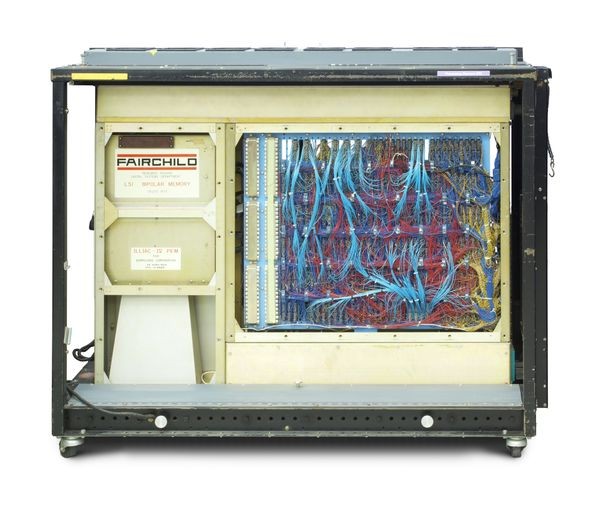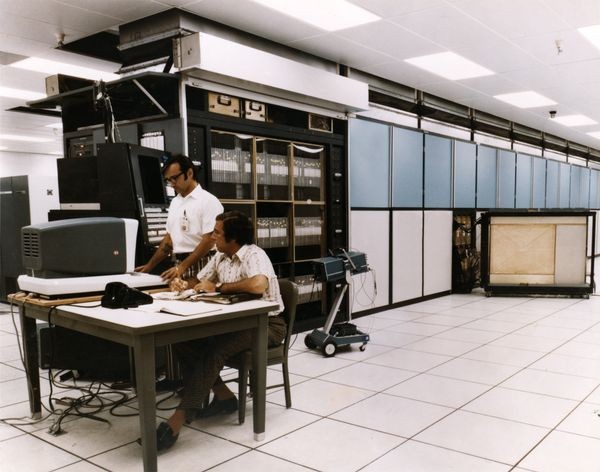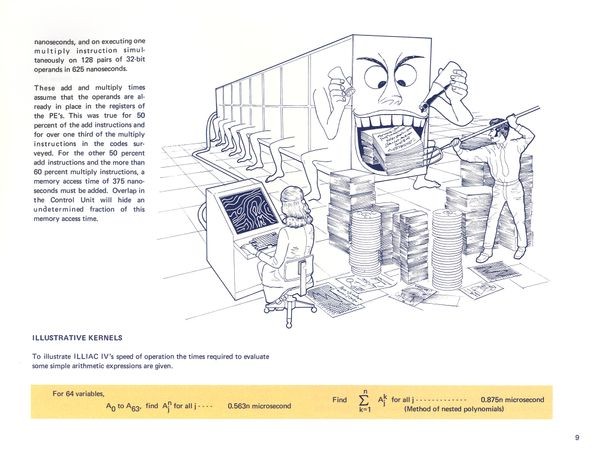Parallel Processing
ILLIAC IV Processing Element
This is one of 64 processing elements with memory built for the ILLIAC IV parallel computer. The only ILLIAC IV made was moved to the Navy's Moffett Field in California in 1971 to avoid Vietnam War turmoil on university campuses.
Parallel Processing
It’s easy to keep improving computer performance when processors get faster. But how do you keep making gains when the rate of processor improvement slows? By adding more processors.
“Parallel” architectures harness hundreds or thousands of processors working together. Writing software to coordinate them all is challenging. But by 2000, parallel processors started to excel, making less expensive supercomputers possible.
Operators at the ILLIAC IV at NASA Ames Research Center
ILLIAC IV wasn't very reliable, but did prove that "single instruction, multiple data" designs worked. It was particularly good for problems in computational fluid dynamics, enabling it to simulate aircraft designs that would otherwise have been analyzed in wind tunnels.
View Artifact DetailProving the Power of Parallel: ILLIAC IV
Daniel Slotnik’s 1966 design for the ILLIAC IV supercomputer featured 256 processors. Each executed the same instructions at the same time, but on different data.
ILLIAC’s cost mushroomed from $8M to $31M, and only 64 of the planned 256 processors (built by Burroughs Corporation) were completed. The computer worked…but never reached its “super” potential.









